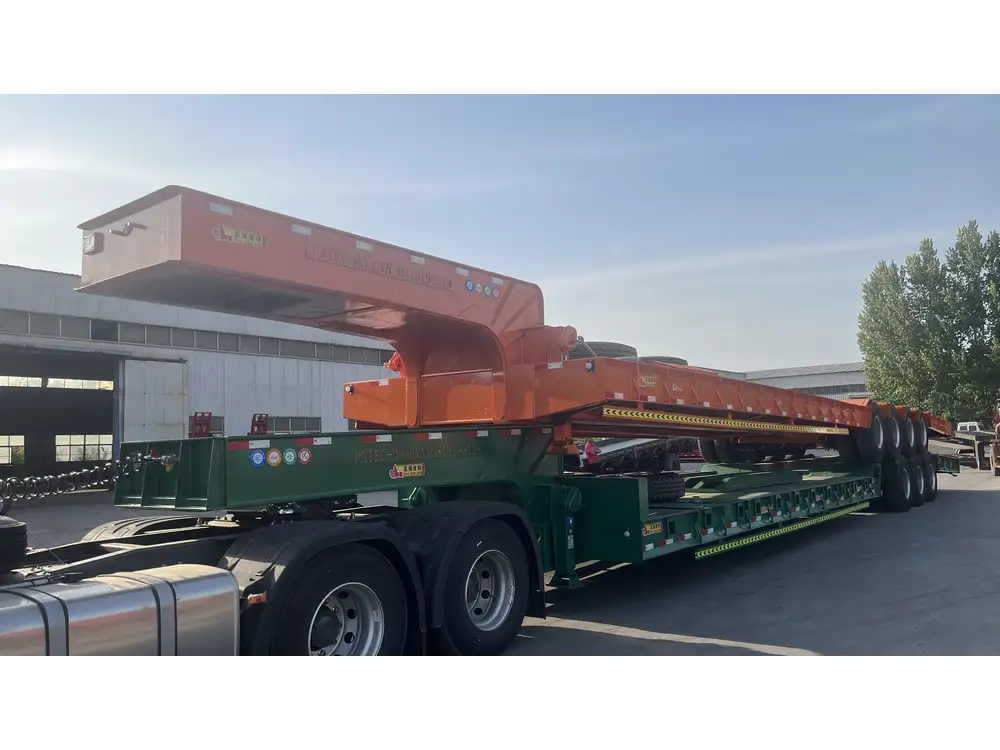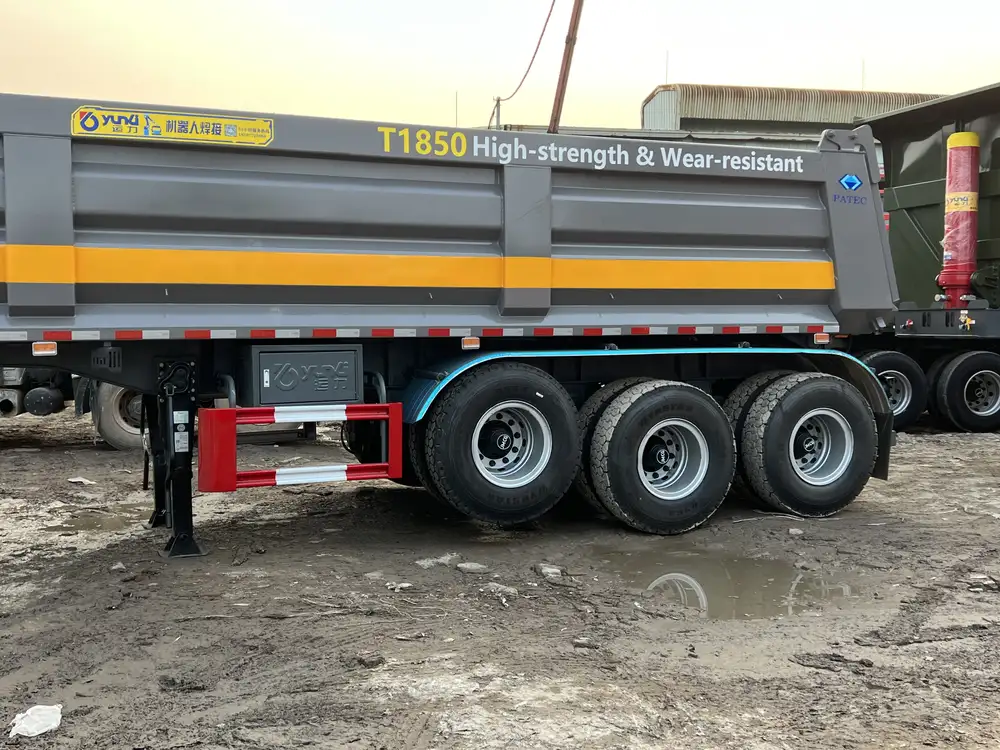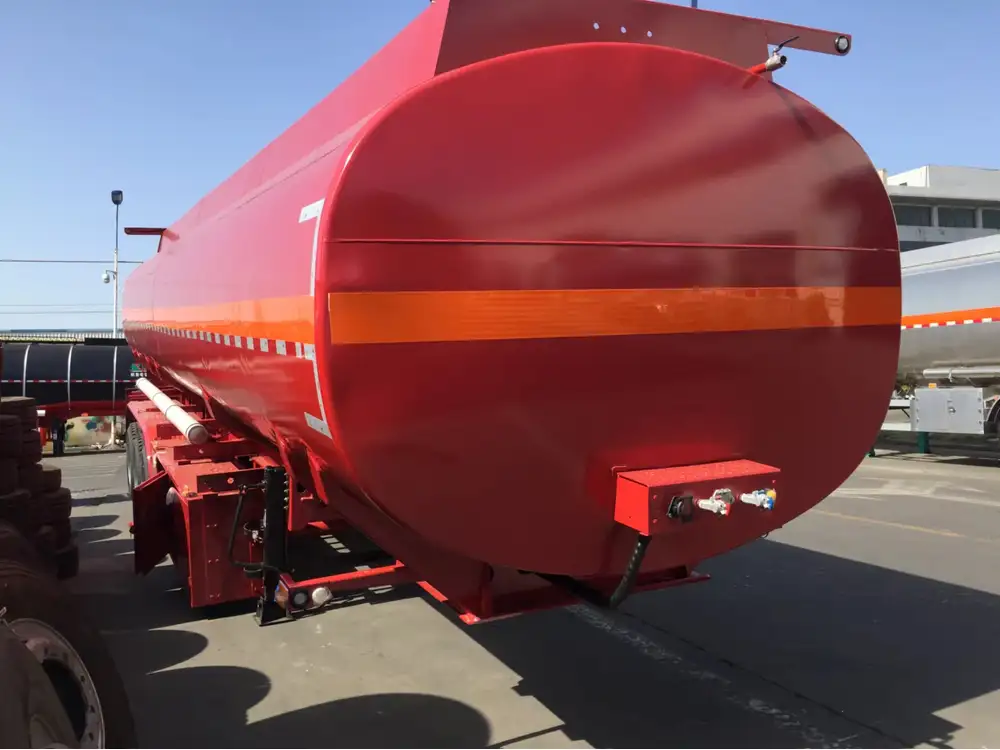Understanding the Basics of Dump Trailers
Dump trailers are indispensable tools in various industries, particularly in construction, landscaping, and waste management. They provide an efficient solution for transporting loose materials such as gravel, dirt, sand, and debris. Knowing how to load a dump trailer effectively not only enhances its capacity but also ensures safety and prolongs the trailer’s lifespan. Below, we dissect the key considerations and methodologies for loading a dump trailer correctly.
Types of Dump Trailers
Before diving into loading techniques, it’s essential to understand the different types of dump trailers available:
| Type | Description | Best Used For |
|---|---|---|
| Standard Dump | The most common type, featuring a simple hydraulic lift. | General construction and landscaping. |
| Side Dump | Allows dumping from the side, offering better load distribution. | Large volume materials like gravel and sand. |
| End Dump | Dumps material from the rear, typically used for heavier loads. | Heavy construction materials. |
| Walking Floor | Uses hydraulic floors to move material out; versatile. | Waste management and transferring bulky items. |
Understanding these types will influence how materials are loaded, maximizing efficiency and upholding safety standards.

Preparing Your Dump Trailer for Loading
Safety First
Before using your dump trailer, prioritize safety by ensuring the following:
- Inspect the Trailer: Check for wear and tear, looking specifically at hydraulic lines and trailer latches.
- Check Weight Ratings: Familiarize yourself with the trailer’s weight limit to prevent overloading.
- Wear Protective Gear: Equip yourself with hard hats, gloves, and steel-toed boots.
Equipment Preparation
Ensure you have the right tools at hand:
- Loading Ramp: For easy access when loading heavy materials.
- Shovel and Rake: For leveling and spreading materials.
- Straps and Tarps: To secure loads during transit.

Step-by-Step Guide on How to Load a Dump Trailer
Step 1: Position the Trailer
Park the dump trailer on a stable, flat surface to ensure balance during loading. This reduces the risk of tipping or accident-related injuries.
Step 2: Calculate Load Weight
Each material weighs differently, so calculating total weight before loading is crucial. Use the following table as a guide for estimating weights:
| Material | Weight per Cubic Yard |
|---|---|
| Dirt | 1,200 – 1,500 lbs |
| Gravel | 1,500 – 1,800 lbs |
| Sand | 2,000 – 2,400 lbs |
| Concrete (mixed) | 3,000 – 3,200 lbs |

Step 3: Load Strategically
Begin by loading heavier materials closer to the trailer’s axles. This practice enhances stability during transport. Here’s how to achieve optimal loading:
- Layering: Place heavier materials on the bottom layer, and layer lighter materials on top.
- Weight Distribution: Ensure a balanced load by distributing materials evenly across the trailer.
Step 4: Secure the Load
After loading, securing the materials is critical. Utilize appropriate tie-down straps and tarps:
- Strapping Down: For loose materials like gravel and sand, use multiple straps for security.
- Covering Loads: Use tarps to cover loads, which prevents spillage and protects against weather conditions.
Step 5: Double-check Before Departure
Implement a final inspection to confirm the trailer’s safety features are operational and the load is secure. Ensuring everything is in order mitigates risks on the road.

Common Loading Mistakes to Avoid
While loading a dump trailer may seem straightforward, several pitfalls can lead to safety hazards and inefficient operations. Here are some common mistakes and how to avoid them:
- Overloading the Trailer: This can damage the trailer and violate transportation laws. Always refer to the manufacturer’s specifications.
- Ignoring Proper Weight Distribution: Unbalanced loads can lead to swaying while driving, increasing the risk of accidents. Ensure even distribution.
- Using Inadequate Securing Methods: Loose loads can shift during transport. Always use high-quality straps to keep everything in place.
- Neglecting Safety Gear: It’s easy to forgo safety measures in a rush to load. Prioritize personal safety above all else.
Maintaining Your Dump Trailer
Regular maintenance is key to prolonging the life of your dump trailer and ensuring safety. Follow these steps for effective trailer maintenance:
Routine Inspections
Perform monthly inspections focusing on:
- Tires: Inspect tread depth and pressure.
- Brakes: Examine brake pads and fluid levels.
- Hydraulic System: Regularly check for leaks and fluid quality.

Annual Professional Check-Ups
Consider hiring a specialist for an annual assessment of the entire trailer. A professional can identify issues that may not be obvious to the untrained eye.
Frequently Asked Questions
Q1: How tall can I stack material in a dump trailer?
The height of the materials stacked in a dump trailer can significantly vary based on the type of materials being loaded and the regulations within your locality. It’s typically advised to keep loads under the trailer’s height rails. Overloading can lead to instability and increased risks of accidents during transit.

Q2: Can I load different types of materials in one trip?
It is generally acceptable to load different types of materials in a dump trailer as long as they are compatible. Avoid mixing heavy materials with lighter ones, as this can lead to issues with weight distribution.
Q3: What should I do if my load spills during transport?
In the event of a load spilling, ensure you pull over safely to the side of the road. Secure the area and collect the spilled material; if it’s significant, notify local authorities, especially if it poses a hazard to other drivers.
Q4: How can I clean my dump trailer effectively?
Post-usage cleaning can be conducted with a hard-bristle brush and water to prevent rust accumulation. If you’ve transported dirt or mud, using a high-pressure washer can save time. For tougher residues, chemicals designed for degreasing can be utilized with caution.

Conclusion
Loading a dump trailer may appear to be a simple task, but the intricacies involved necessitate a thorough understanding of techniques, safety protocols, and best practices. The steps detailed above aim to not only enhance efficiency but also maintain safety throughout the loading and transportation processes.
By adhering to these guidelines, we ensure our trailers operate effectively, safeguard our workforce, and contribute to successful project outcomes. Always remember that continuous learning and adaptation to best practices are fundamental in maintaining a competitive edge in the trailer manufacturing and transport industry.



